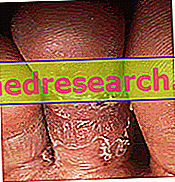The skin, as we all know, performs numerous functions. One of the most important is the immunological one made possible by the presence of specialized cells that trigger humoral and cellular reactions that end with the removal of the foreign material and the defense of the organism. Even more important is the barrier function that depends on the composition of the stratum corneum, the composition of surface lipids, the levels of hydration and the hygroscopic skin properties.

Barrier function and TEWL
TEWL (trans epidermal water loss), ie the amount of water that diffuses through the stratum corneum, is a reliable indicator of the integrity of the skin's barrier function, undergoing changes in the presence of alterations, even clinically not appreciable, of the skin. The baby's skin in the first years of life, due to the small size of the corneocytes and the reduced thickness of the stratum corneum, results to have a weaker barrier compared to that of the adult and high values of TEWL (tran epidermal water loss).
Barrier function and pH
The acid pH of the skin is determined by the presence of lactic acid and free amino acids, as well as the quantity of fatty acids present in sebum and cutaneous lipids. The acid pH of the skin has a precise function: it allows the survival of useful microbial strains, prevents the proliferation of potentially harmful microorganisms and allows the functioning of sensitive pH enzymes, (such as the proteases responsible for the degradation of corneodesmosomes). The skin of the child, as indeed that of the adult in physiological conditions is acidic. Only in the first few weeks of life can we speak of a slightly more alkaline pH than the physiological acid values, perhaps due to exposure to the amniotic fluid. Immediately after birth, the surface pH of the skin becomes progressively more acidic and leads to the formation of the acid mantle. Significant changes are evident as early as the second day after birth. Subsequently, the pH continues to decrease during the first month of life and then remains relatively stable until the third month. Despite this decrease, the skin's pH remains significantly higher throughout childhood compared to that of adult skin. The almost neutral pH of the baby's skin, particularly in skin areas such as the buttocks, is responsible for the greater propensity to develop skin irritation. The irritation may be responsible for an increase in the permeability of the epidermal barrier which can lead to an easier propensity to microbial attack.
Cell proliferation
The integrity of the stratum corneum is the fundamental element of the barrier function of the epidermis. The thickness of the skin is determined by a perfect balance between the process of proliferation of keratinocytes and that of cellular desquamation (elimination of corneocytes). The alteration of one of the two processes would lead to a thinning or thickening of the skin surface. During the first three months of life, the rate of cellular desquamation varies depending on the anatomical location. It is significant in the areas of the face and forearms and lower in the buttock area. Epidermal cell proliferation, on the other hand, decreases significantly during the first year of life and reaches levels comparable to those of adult skin during the child's second year of life.
Conclusions
In conclusion it is possible to affirm that the child's skin in the first years of life differs from that of the adult in different aspects:
- the corneocytes have smaller dimensions and the stratum corneum is thinner as well as the thickness of the epidermis.
- There is no real distinction between papillary dermis and reticular dermis and the collagen fibers are less dense and organized.
- The baby's skin is very dry and gradually becomes more hydrated in older children.
- NMF, surface lipids and melanin are present in low concentrations compared to adult skin.
- The barrier function of the skin is weaker due to the high cellular turnover, the pH that tends to alkalinity and a high TEWL.
The baby's skin in the first years of life is therefore more vulnerable to chemical agents, UV rays, microbial aggression and the onset of skin diseases. It is also evident that the process of skin maturation continues even after birth and that the transformations that bring the baby's skin to become an "adult" skin follow one another significantly during the first years of life.



